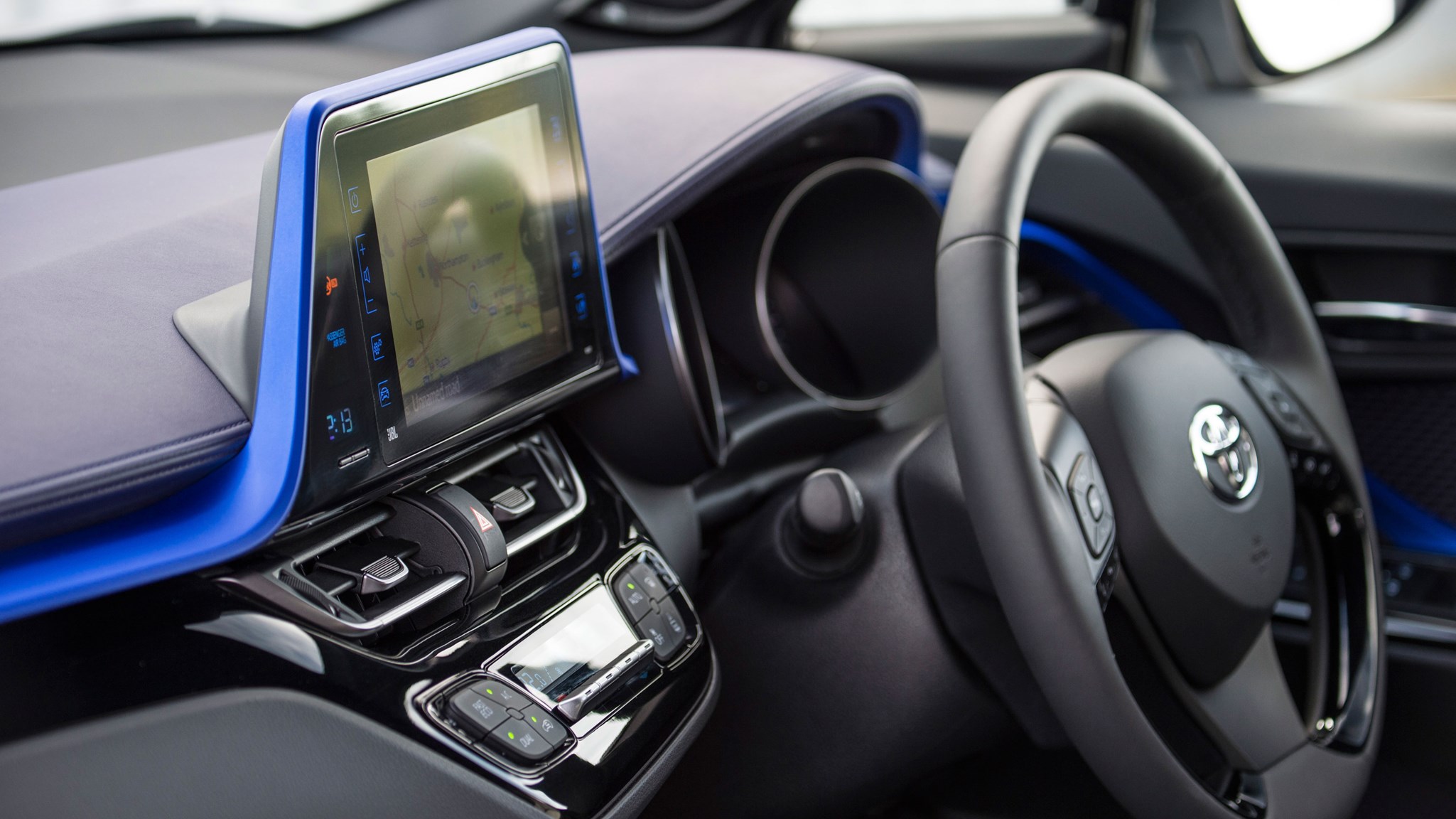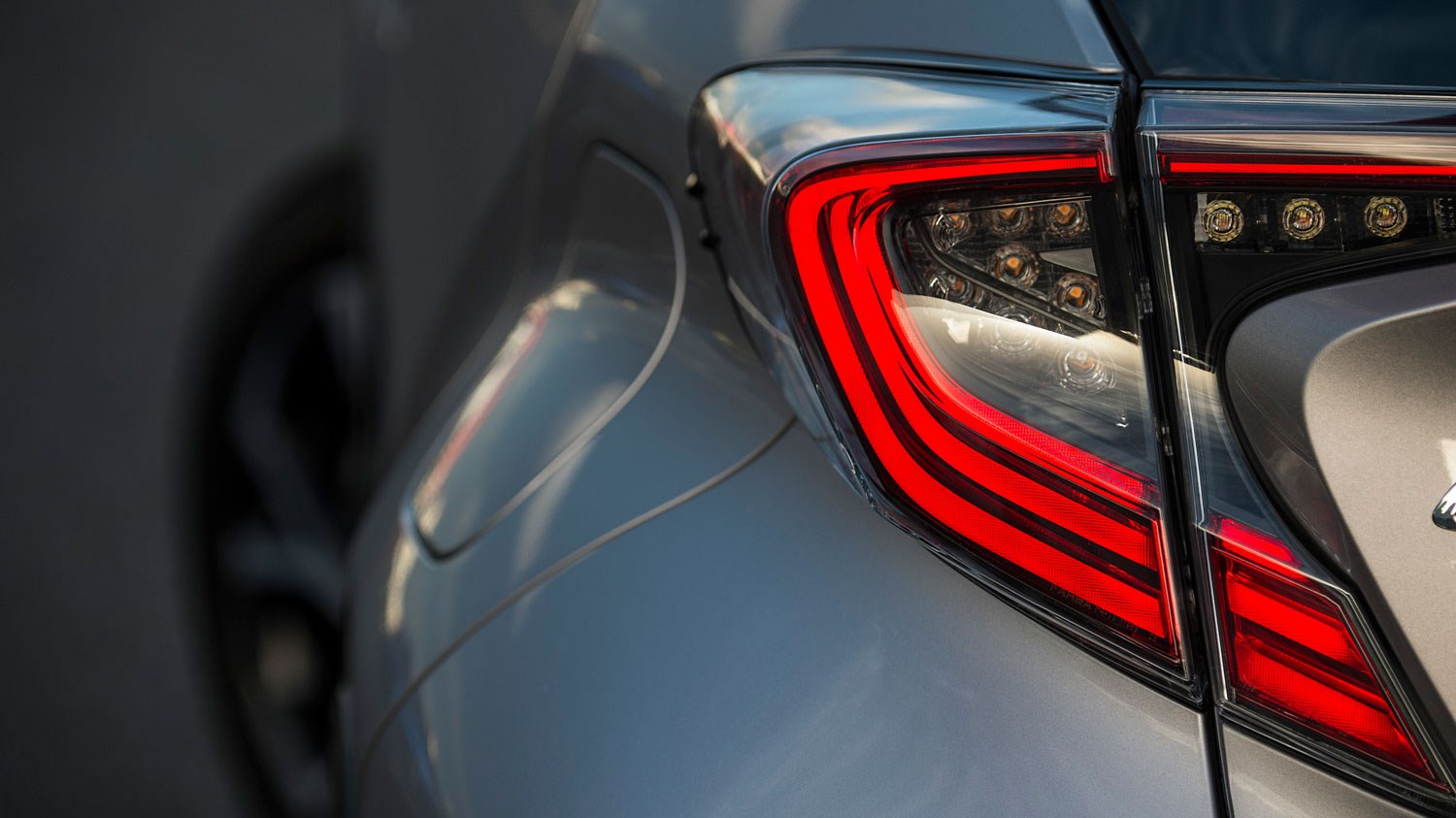► C-HR = Coupe High-Rider
► 1.2 turbo or 1.8 hybrid – no diesel
► Concept car looks, dynamic revolution?
Clap eyes on the new Toyota C-HR for the first time, and you’ve got to think: that’s it – Toyota’s had enough.
Enough of being ‘the dull one’ of the group, enough of being the one everyone else expects to drive them home at the end of the night, the one who turns up on time, unflinchingly exact, unremittingly reliable, slightly badly dressed…
Ok, so the reliability thing will probably continue – after all, who wants to be a jerk? – but clearly a little more excitement and a frisson of rebellion is on the cards from now on.
How else do you explain the world’s most pre-eminent(ly sensible) car maker so completely missing the conventional brief with its oh-so-late entry into the family crossover segment.
It’s like someone sent the un-edited C-HR proof to the 3D printer, and Toyota’s ended up accidentally putting a concept car into production.
Check out our Best Hybrids and Plug-In Electric cars list
My, my – the Toyota C-HR looks… wild
There’s a little too much Honda Civic in the back end for our tastes, and hell yes, the overall design is surely going to date like carrot-cut trousers, but park the C-HR next to a Qashqai and it’s clear who’s the rock and roller among the parents outside playschool.
And though Toyota is rather hoping trendy urbanites will represent the bulk of buyers, despite that sloping roofline there is still a reasonable amount of room in the back. What there isn’t, however, is much daylight, since the rear pillar is so big a grown adult can hide behind it like a VIP in the back of a Rolls-Royce Phantom. The kids, we’re strongly suspecting, will not like.

The interior presents other challenges up front. Infotainment screens that stand proud of the dashboard seem to inspire vehement dislike from certain quarters, and the C-HR’s is asymmetrical. This decision almost out-bolds the exterior – especially with the electric blue trim surround that comes as standard on the top spec Dynamic model – and again appears to come directly from the original concept sketches.
It’s part of a wider ‘layered effect’ to the dash design, starting with the leatherette finisher on the top in fancier models (this is a dusky purple colour in the Dynamic) and proceeding through strata of gradually decreasing quality as it heads towards the footwells.
These touches, and the diamond-pattern doorcards, don’t quite manage to distract you from the swathes of dull black plastic, but the C-HR is functional inside as well as eye-catching, with all the major points of interaction clearly angled towards the driver. The diamond motif – taken from the complex faceted body panel creases – is repeated among the button clusters and hollowed-out areas of the headlining.
Is this the motoring equivalent of a dull personality dying their hair pink?
This is the really extraordinary bit: Toyota has built a regular car that’s good to drive.
The signs were there in the fourth generation Prius, which left Chris Chilton perplexed by handling prowess. The C-HR uses the same Toyota New Global Architecture (TNGA) platform – it’s the GA-C variant, hardcore chassis-code fans – which is both usefully rigid and, thanks to some innovative suspension mounting points and a low-slung drivetrain, impressively vertically challenged when it comes to centre of gravity. Especially for a crossover.

Compared with the Prius, the C-HR has a slightly shorter wheelbase and a specific subframe to optimise the angles for the double-wishbone rear suspension. This also features a ball-joint connection for the lower arms in place of the Prius’s conventional bushing, improving accuracy and response.
So it goes round corners?
Remarkably, accuracy and response are two words appropriate to the overall handling, too. The C-HR was designed and engineered specifically for Europe; we hear this a lot these days, but during the launch event chief engineer Hiroyuki Koba and his team were at pains to express just how much time they’d spent trying to understand European driving habits and how they differ to Japanese tastes – indeed, the C-HR’s chassis has been in development since 2011, and in that time it’s been in the UK and raced (not just tested) on the Nurburgring.
For a particularly nerdy example, take the shock absorbers, which are unusually sourced from European maker Sachs rather than a Japanese supplier – precisely because the Sachs dampers deliver the more progressive, accurate response Koba-san was striving for.
In practice this means they smoothly muffle rough surfaces while providing consistent, progressive body control in the corners; the C-HR does not lurch, it just swiftly transitions from flat to turning with poise.
No doubt the chunky anti-roll bars help with this composure – and you can occasional detect their presence in a minor amount of lateral chop that occurs on bumpy straights – but with the electric power steering successfully avoiding cloying centre-line slop, this is an engaging device that punts round twisty roads and slices through city traffic rather nicely. Toyota says it was benchmarked against hatchbacks, not crossovers; we believe it.
Which engine is best?
If you want a diesel, tough luck. There isn’t one, and won’t be. Instead the C-HR comes with the latest Prius hybrid system – combining a 1.8-litre petrol and an electric motor to the tune of 120bhp – or a 114bhp 1.2 turbo that’s got such clever variable valve timing it can swap between Otto and Atkinson injection cycles on the fly.
The hybrid’s ok, though as per usual the CVT auto diminishes the experience, heavy-footed moments exhibiting a curiously ghostly howl. It’s also 60kg heavier than the turbo, so doesn’t quite have the same sharpness of chassis.

We’d pick the 1.2. It’s not as positively torqued as some downsized tiddlers – meaning it can feel rather flat – but Toyota reckons having four cylinders means you should get closer to the claimed 47mpg and it even makes an enthusiastic noise when pushed.
More pertinently, in its most basic front-wheel drive form it’s the only C-HR available with a manual gearbox (CVT and all-wheel drive CVT variant are also offered; the hybrid is fwd only), which improves the driving experience still further. It’s a literal ’box of tricks, too, as it rev matches upshifts as well as downshifts for maximum slickness; Toyota calls it the Intelligent Manual Transmission.
Verdict
Toyota has built a genuinely interesting and engaging vehicle here – and while the Qashqai will hardly be quaking in its boots, the C-HR is certainly a breath of fresh air in the rather staid family crossover segment. Standard kit levels are keen, with an emphasis on safety and technology; only base-spec examples miss out on sat-nav, and you can have an intricately engineered JBL hi-fi system as an option.
Toyota took a risk, and it’s paid off.
Click here for more Toyota reviews by CAR magazine